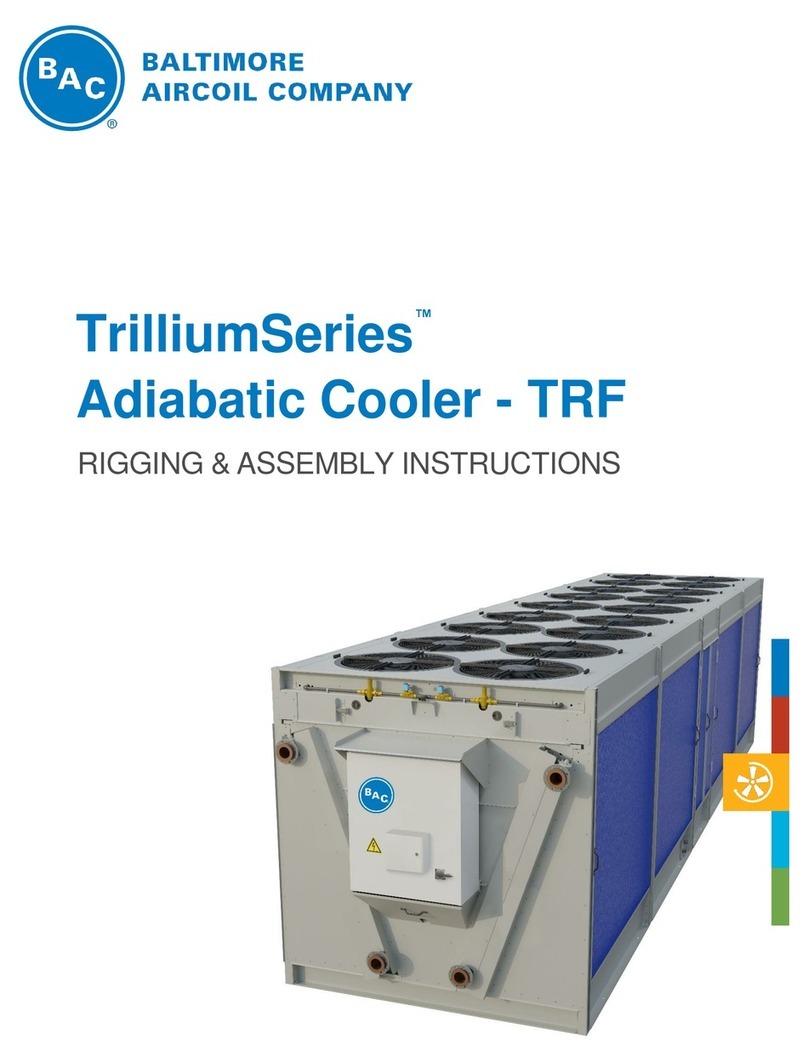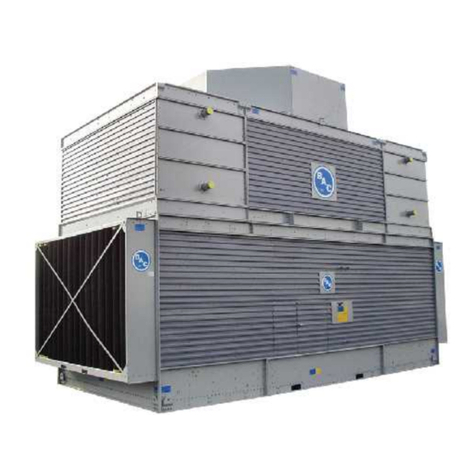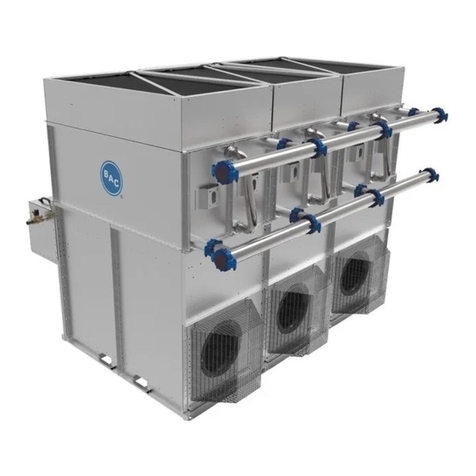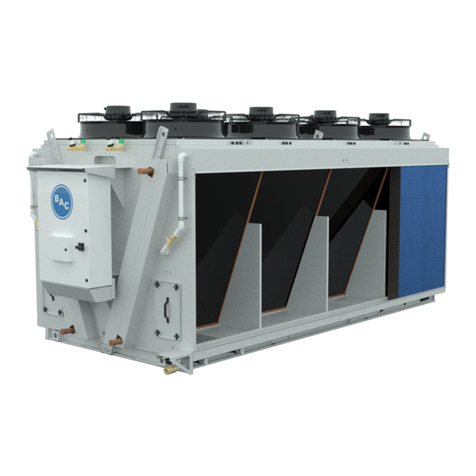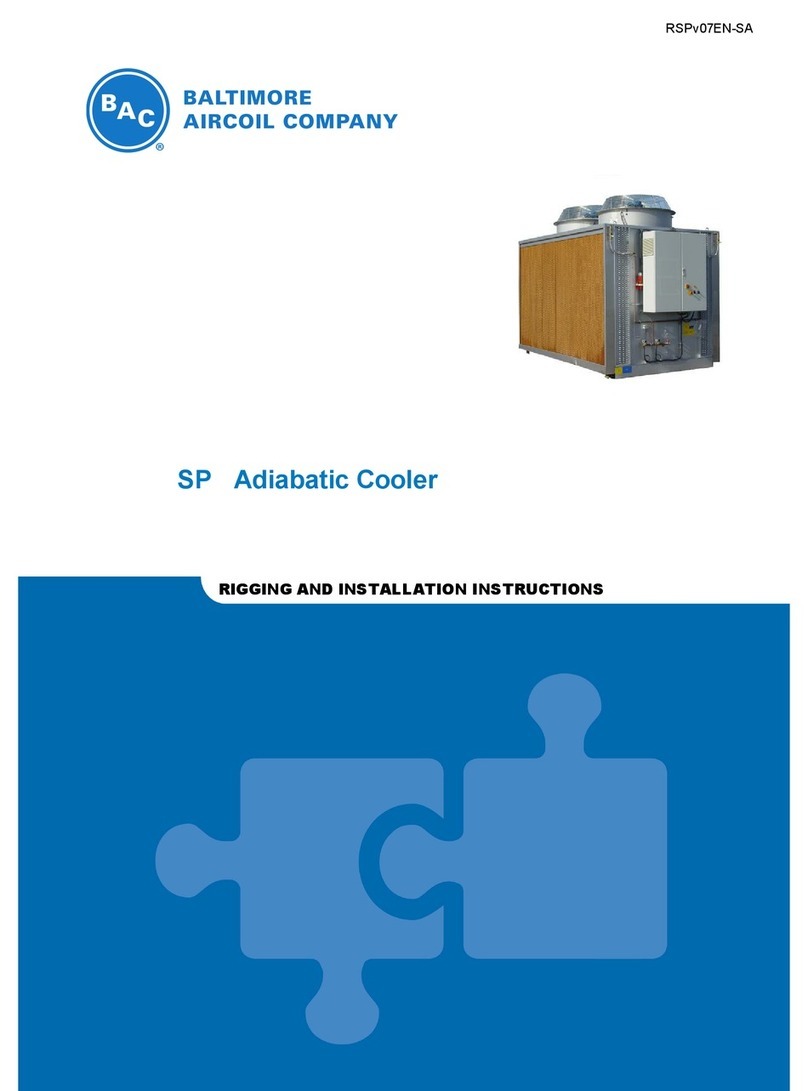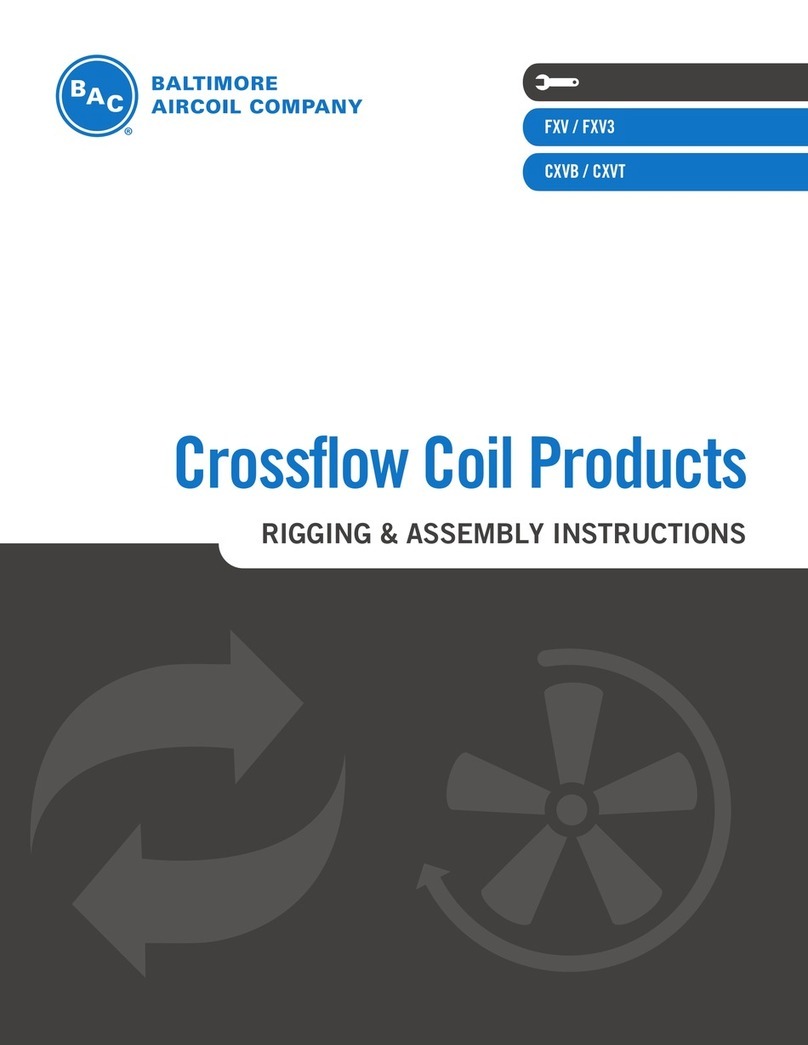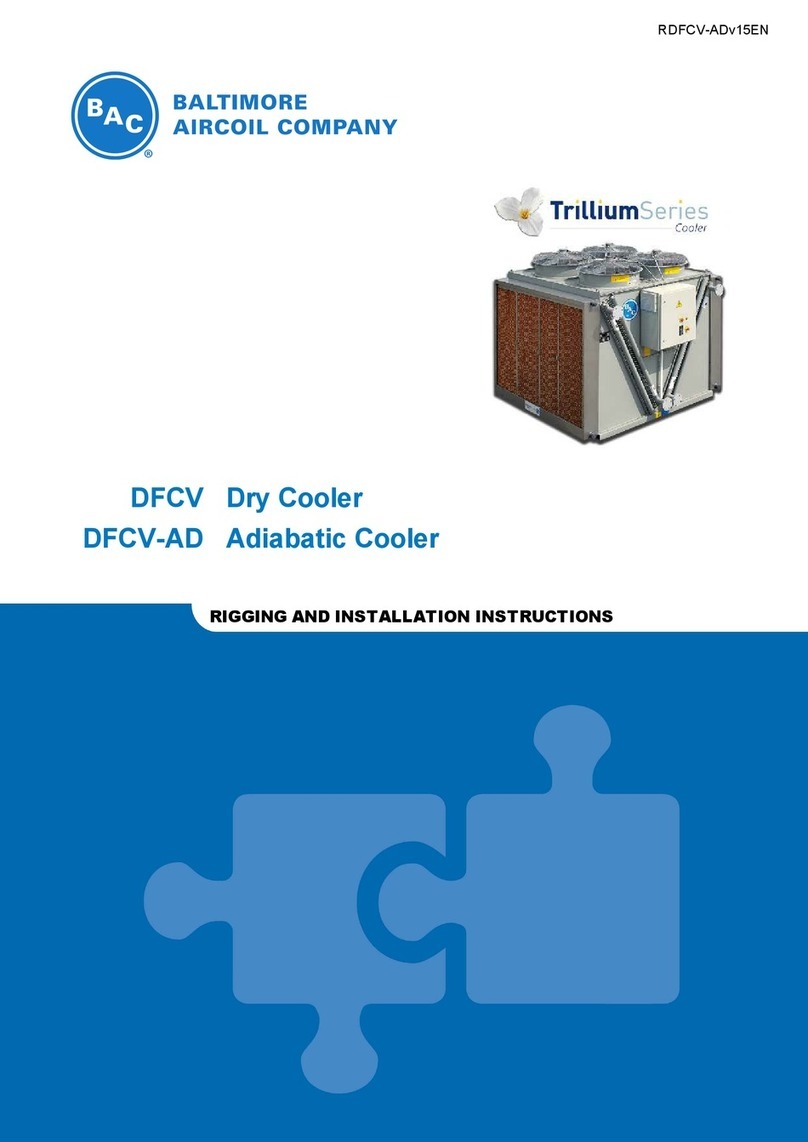
WWW.BALTIMOREAIRCOIL.COM
6
After 24 hours of operation
under thermal load, perform the
following services:
9Check the unit for any unusual
noises or vibrations.
9Check the operating water
level in the cold water basins.
9Adjust the make-up valve if
necessary.
9Check the belt tension and
readjust if necessary.
9Inspect the spray nozzles and
heat transfer section.
• Execute one of the following biocide treatment programs while operating the
circulating pump and prior to operating the unit fan(s):
–Resume treatment with the biocide that was used prior to shutdown. Operate the
pump only while maintaining the maximum recommended biocide residual for a
sufficient duration (residual and time will vary with the biocide) as recommended
by the water treatment supplier. Start the fan only after this treatment period is
completed.
–Check the pH of the circulating water and, if necessary, adjust it to 7.0 - 7.6 pH.
Then, running the pump only, treat the system with sodium hypochlorite to maintain
a level of 4 to 5 mg/l (ppm) free chlorine (as Cl2) over a six hour period. Test kits for
measuring the free residual of chlorine are commercially available. Start the fan only
after this treatment period is completed.
• Verify proper fan tip clearance. Refer to Fan “Inspection & Maintenance” on page 11.
• Adjust the valve (supplied by others) in the unit bleed line until the desired bleed rate
is reached.
• For initial start-up, briefly energize the fan motor(s) and note the direction of rotation.
The fan should rotate in the direction indicated by the arrow on the fan cowl.
• Run the fan in manual mode for several minutes to check for any unusual noise or
vibrations.
• For a 2-speed motor, check to ensure the starter includes a minimum 15 second time
delay when switching from high speed to low speed.
• Check the operation of the optional vibration cutout switch if ordered. Refer to page
29 for more information.
• Once the cooling tower is operating, check the current and voltage of all three phases
(legs) of the fan motor with a heat load on the unit under warm ambient conditions.
The current must not exceed the motor nameplate rating.
• Verify combined inlet shield retainers are compressed to engage the combined inlet
shields (CIS). This will prevent the CIS from separating from the unit during high
winds.
Extended Shutdown
Perform the following services whenever the unit is shutdown in excess of three days:
• If the unit is mounted on vibration isolators (by others), refer to the manufacturer’s
guidelines before loading/unloading weight from the unit.
• Disconnect, lock out, and tag out the fan and pump motors.
• Close the shut-off valve in the make-up water line (supplied by others).
• Disconnect, lock out, and tag out power to the optional basin heater, if applicable,
before draining the cold water basin.
• Drain the cold water basin and all the piping that will be exposed to freezing
temperatures. Heat trace and insulate all exposed piping.
• Clean all debris, such as leaves and dirt, from the interior and exterior of the unit,
including the combined inlet shields.
DANGER: Rotating equipment
will cause severe personal injury
or death to persons who come in
contact. Do not perform any service,
maintenance or inspection on or
near the fans, motors, and drives,
or inside the unit without first
ensuring that the fan and pump
motors are disconnected, locked
out, and tagged out.
NOTICE: Ensure the controls for
the fan motor are set to allow a
maximum of six on-off cycles per
hour to prevent motor overload.
